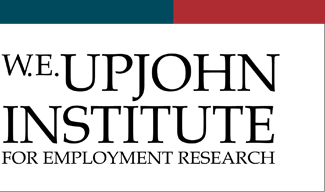Publication Date
11-4-2022
Series
Upjohn Institute working paper ; 22-376
DOI
10.17848/wp22-376
Abstract
Many working-age Americans say they will continue some forms of social distancing after the COVID-19 pandemic ends. We uncover this long social distancing phenomenon in our monthly Survey of Working Arrangements and Attitudes. It is stronger among older persons, the less educated, and those who live with or care for persons at high risk from infectious diseases. Regression models fit to individual-level data suggest that social distancing lowered labor force participation by 2.4 percentage points in 2022, 1.2 points on an earnings-weighted basis. Daily interactions with at-risk persons and long COVID experiences lead to larger drags on participation. When combined with simple equilibrium models, our results imply that the social-distancing drag on participation reduced U.S. output by $205 billion in 2022, shrank the college wage premium by 2.1 percentage points, and modestly steepened the cross-sectional age-wage profile. Our data also say that social distancing intentions overlap with, but are broader than, infection worries. Drawing on self-assessed causal effects in a separate analysis, we estimate that infection worries lowered participation by one percentage point as of late 2022.
Issue Date
November 2022, Revised May 2023
Note
Upjohn project #58160
Sponsorship
W.E. Upjohn Institute for Employment Research Early Career Research Award 21-58160-02, Templeton World Charity Foundation, Smith Richardson Foundation, Stanford University, Chicago Booth School of Business, Asociación Mexicana de Cultura A.C., Stanford Institute for Human-Centered Artificial Intelligence, Toulouse Network for Information Technology, and the MIT Mobility Initiative
Subject Areas
LABOR MARKET ISSUES; Wages, health insurance and other benefits
Get in touch with the expert
Want to arrange to discuss this work with the author(s)? Contact our .
Included in
Citation
Barrero, Jose Maria, Nicholas Bloom, and Steven J. Davis. 2023. "Long Social Distancing." Upjohn Institute Working Paper 22-376. Kalamazoo, MI: W.E. Upjohn Institute for Employment Research. https://doi.org/10.17848/wp22-376

